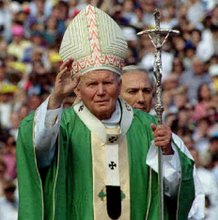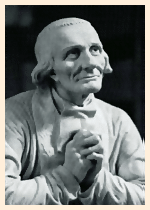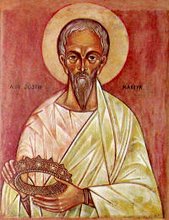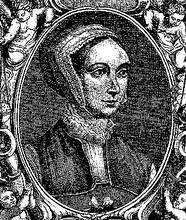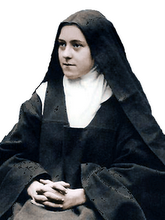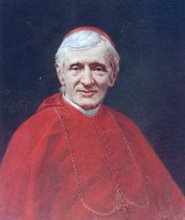
In Tolkien's "The Lord of the Rings" the elven queen Galadriel allows Frodo, the ring-bearer, to look into her mirror. The mirror itself is a draught of water which is taken from a secret spring and then poured into a special basin. Looking into this basin, rather than seeing one's own reflection, one sees images of events from the past, the present and even the future. It is a sort of "reality check" for Frodo, but one which requires some interpretation since the meaning of events is not always evident. Indeed, Frodo has to look into the mirror twice in order to even begin to see any image. And what he sees is ambiguous, it confuses him, and it draws him in - he almost falls into the basin!
The prevalent culture today is similarly ambigous and confusing, and it draws us in. Like the images which are reflected in Galadriel's mirror we need to take a second look, a second look which is more discerning than the first.
The secular culture in which most of us live offers no guide, no interpretation, no direction. But, if we take a second look then we can see that its primary focus is "self"; what it proposes is, first remove God from the scene and then seek success in whatever you attempt.
Secular morality is worth distinguishing for what it is: it focusses on virtually unobtainable goals as the purpose of and motivation for living, and then leaves you to struggle desperately towards them. The goals are things like inordinate wealth, beauty, prestige and dominance. The best image I can think of for today's secular morality is the weights gym. I'm not against gyms or keeping fit, but battling against serious odds in order to achieve an ephemeral goal is the content of todays secular ethic. It is an extremely demanding morality.
Two other points stand out in relief when one reflects upon today's secular culture. First, it operates at an IQ level of not higher than 14. You can test this out by turning on the television for a few minutes. Secondly, secular cultures costs a lot; in comparison with the family meal table and the table of the Lord's Body and Blood, secular culture starts at Cafe prices and rises steadily to encompass cars which have the same retail value as some family homes, and wrist watches which have a retail value greater than many people's annual wage.
Yet, so many are drawn in by this culture, and the homogenous nature of the secular world means that we rarely have a different viewpoint by which to assess our options and personal culture. Unlike Frodo, who had a humble elven queen to help him see the juxtaposition of the values which presented themselves to him.
What is most worrying however, are the number of baptised people who square themselves up to live according to secular culture. Now that Holy Week has begun, this is not the time to plaster over our personal culture, but rather to allow Christ to take centre stage in our lives.

























